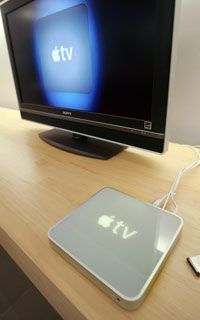For most of the twentieth century, the only ways to watch television were through over-the-air broadcasts and cable signals. With broadcast TV, an antenna picks up radio waves to transmit pictures and sound to your television set. With cable TV, wires connect to a set-top box or to your TV itself. These wires run from your house to the nearest cable TV station, which acts as one big antenna. Aside from a few options like satellite TV, broadcast and cable were -- and still are -- the main ways to watch television.
New technology can change the way we receive news and entertainment, though. Radio challenged newspapers in the early 1900s, and television challenged radio. Now, it looks as though traditional television has its own competitor, but it's not one that's easily separated from television. It even has television in its name -- it's what we're now calling Internet TV.
Advertisement
Internet TV, in simple terms, is video and audio delivered over an Internet connection. It's also known as Internet protocol television, or IPTV. You can watch Internet TV on a computer screen, a television screen (through a set-top box) or a mobile device like a cell phone or an iPod.
It's almost the same as getting television through an antenna or a series of cable wires -- the difference is that information is sent over the Internet as data. At the same time, you can find even more variety on Internet TV than cable TV. Along with many of the same shows you find on the big networks, many Web sites offer independently produced programs targeted toward people with specific interests. If you wanted to watch a show on vegetarian cooking, for example, you could probably find it more easily over the Internet than on regular TV.
Because many sites offer on-demand services, you don't have to keep track of scheduling. For sites using webcasting or real-time streaming video, though, live broadcasting is still an option.
Internet TV is relatively new -- there are lots of different ways to get it, and quality, content and costs can vary greatly. Shows can be high-quality, professionally produced material, while others might remind you of Wayne and Garth broadcasting "Wayne's World" from their basement. Traditional TV networks are also easing into the technology and experimenting with different formats.
In this article, we'll go over the basics of Internet TV and talk about some of the current options for finding and watching it.
Advertisement





